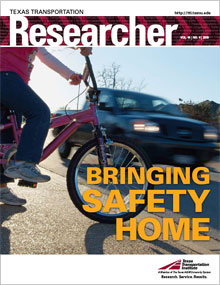
Motor vehicle crashes are the leading cause of death for citizens from 4 to 34 years of age. Even though progress has been made in the reduction of traffic fatalities in this and other age groups, many in the traffic safety community believe that we may have reached the point of diminishing return in terms of resources expended versus lives saved.
Conventional wisdom is that successful engineering, enforcement and emergency medical measures are the most efficient ways to save lives, producing great reductions in crash losses for the resources invested. In the future, such reductions will be unlikely unless there is a significant change in the way in which the driving public views driving risk. Such a change would require a change in the tolerance of current levels of driving risk by individual drivers and a change in the acceptability of risk-taking behaviors in others. In short, significant future reductions in crash losses depend on a paradigm shift in the culture of driving behavior.
Safety culture, as a concept, has its beginnings in industry. It’s an organizational approach to safety that implicitly recognizes that engineering, education and enforcement methods can only improve workplace safety to a certain extent. Additional safety improvements must come from changing the culture of the organization.
Successful application of the safety culture concepts from industry to the highway system can produce significant reductions in fatal and injury crash rates. Adaptation and implementation of safety culture concepts to the highway system require dealing with three primary groups — policymakers, current drivers and future drivers. Elected and appointed officials need to be more aware of the losses due to traffic crashes and become strong public proponents of safe driving behavior. Existing drivers need to be convinced that changing driving behaviors will produce long-term personal and societal benefits. Future drivers need to be instilled with the social conscience necessary to not only fit in, but to help keep the system self-sustaining.
What will it take to motivate policymakers, get existing drivers to overcome a lifetime of self-directed driving habits, and train future drivers to operate in and improve the social structure of a traffic safety culture? It will take political and societal will to make a change and to sustain that change over time. Information can help with that process. Information is needed to both assess the attitudes of policymakers and existing drivers and determine how to motivate them to drive safer. It will take time to acquire information, time to change attitudes and time to change behavior.
